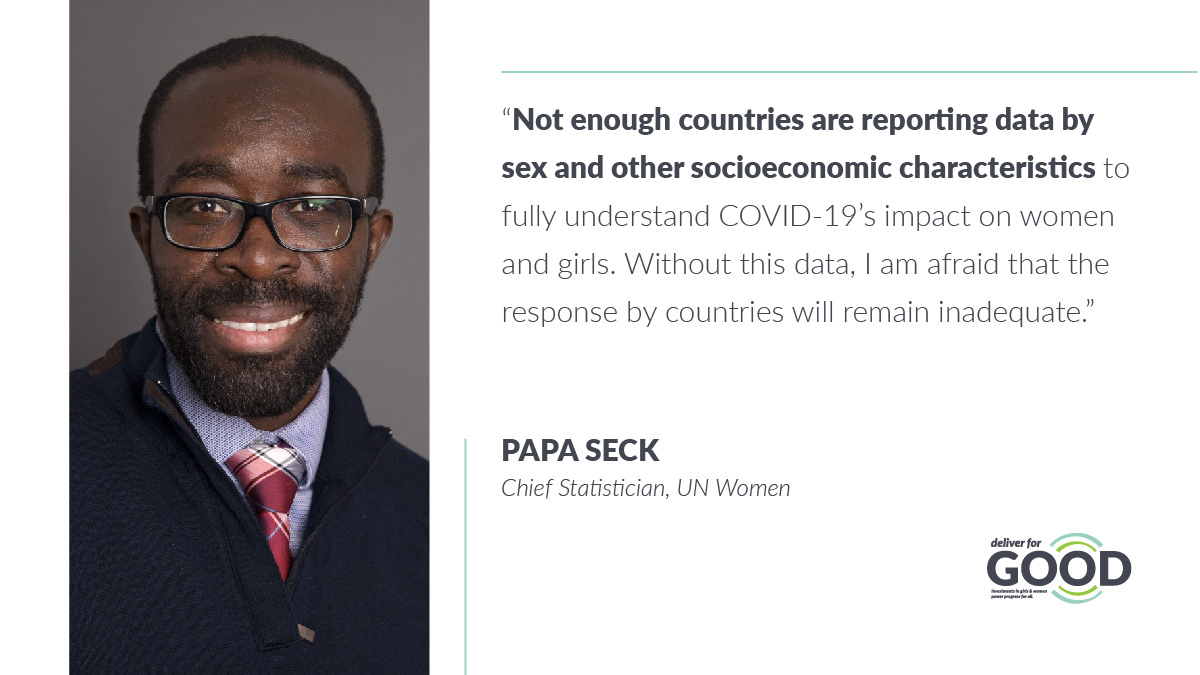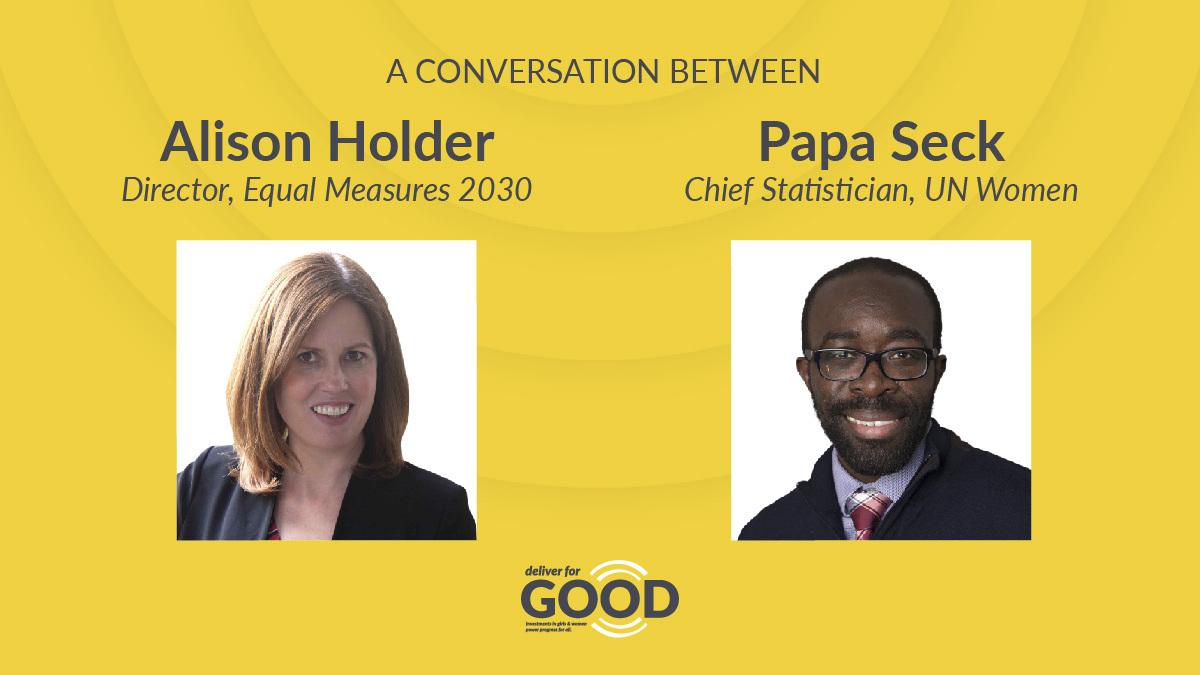In a special Deliver for Good hosted conversation in advance of this year’s virtual United Nations World Data Forum, Alison Holder, Director of Equal Measures 2030 and Deliver for Good Advisory Group partner, speaks with Papa Seck, Chief Statistician of UN Women, about why decision-makers need to get serious about capturing gender data that recognize intersecting inequalities. This Q&A was originally published on Deliver for Good on 14 October.
Today, most data are not collected and presented in a gender-disaggregated way. And when research does look at gender separately, it’s common practice to classify girls and women or boys and men as one homogenous group. But without gender data, broken down by the many factors that shape people’s lives — including race and ethnicity, sexual orientation, disability status, and socioeconomic class — we lose the critical information needed to paint a clear picture of the diverse challenges that girls and women face globally.
By fully harnessing the power of data that accurately reflect the ways that different people experience various forms of inequality and crises like the COVID-19 pandemic, governments have an opportunity to drive smarter investments and create the policies, programs, and solutions needed to tackle deeply entrenched inequity, advance gender equality, and create more inclusive, resilient societies.
Alison Holder: So far, the data we have about the gendered impacts of the COVID-19 pandemic have underscored stark social and economic inequities within and between countries, and show how girls and women, particularly Black, Latinx, and Indigenous girls and women, have shouldered staggering increases in unpaid labor and caregiving, while also being disproportionately impacted by gender-based violence, income loss, and unemployment. Even before the pandemic, 91 percent of the over 600 gender equality advocates surveyed by Equal Measures 2030 said they felt that collecting data on issues that affect girls and women was not a priority for governments. As leaders gather virtually at the UN World Data Forum against the backdrop of the pandemic and the budget pressures that may limit social spending, what steps can governments take to address data that hide differences in vulnerabilities amongst groups by income, race, and other relevant markers of disadvantage?
Papa Seck: I can tell you there is a quick win, which is relatively low cost and easy to do but unfortunately not prioritized enough. Even though we still have large gender data gaps, we have a lot of census, survey, and administrative data already at our disposal. The problem is that they are often not analyzed enough to show inequality across groups. We need to identify these data sources and reprocess them using an intersectional (multi-disaggregation) approach. Doing this will bring visibility to not only challenges faced by women and girls but will also tell us what we can easily change in future data collection to fill the gaps.

At UN Women, we’ve supported and done a lot of analysis of this sort, and what it reveals is clear: women and girls from marginalized groups are consistently being left behind. We devoted an entire chapter to data reprocessing in our 2018 report, Turning Promises into Action, and have updated this in our recent efforts to monitor the SDGs, including the just released 2020 edition of the SDG Gender Snapshot.
The COVID-19 pandemic is sharpening these fault lines of inequality. Our latest report, From Insights to Action, shows how vulnerabilities faced by women from poor, marginalized, and excluded communities exacerbate their exposure and risk to the virus but not enough countries are reporting data by sex and other socioeconomic characteristics to fully understand COVID-19’s impact on women and girls. Without these data, I am afraid that the response by countries will remain inadequate.
Alison Holder: Papa Seck, based on your experience as Chief Statistician at UN Women, what are some of the greatest challenges to collecting data that accurately reflect the broader impact of social and political environments on girls, women, and gender equality? Can you share a few examples of actions that governments facing tighter budgets can still manage to take in order to ensure that data are disaggregated not only by sex and gender but by other aspects of identity, including race, ethnicity, and socioeconomic class?
Papa Seck: Data collection can be an expensive endeavor, and resources are a perennial challenge even at the best of times. Some countries are solving this challenge by using administrative data, which is the most convenient and cost-effective data source that can be used to monitor the SDGs because it is already being routinely collected. We studied six countries in Africa and found that 63 percent of the gender-specific SDG indicators can be derived from administrative sources. Imagine the potential for monitoring progress! In Ethiopia, the recommendations of the study are already being used to find ways to incorporate this data into their plans.
Household surveys also have the potential to improve data disaggregation to ‘leave no on behind.’ But to realize their full potential, they need more support. And as I said above, reprocessing them generates new findings. We are seeing this happen in Kenya and Tanzania as part of the Women Count program where reprocessing survey data are generating new data on women’s economic empowerment to improve SDG monitoring. In Kenya, working with the Kenya Bureau of Statistics and the Council of Governors, through data reprocessing, we produced the first-ever county gender data sheets for an initial 10 out of 47 counties. The county gender data sheets brought about three new women’s empowerment-related legislations in Kitui County and directly informed decision-making on the supply of contraceptives in Kirinyaga County.
The Inter-Secretariat Working Group on Household Surveys, which I co-chair with the World Bank, fosters improvement in national, regional, and international household survey programs to improve SDG monitoring. With more donor support, a lot could be achieved thought this mechanism.

